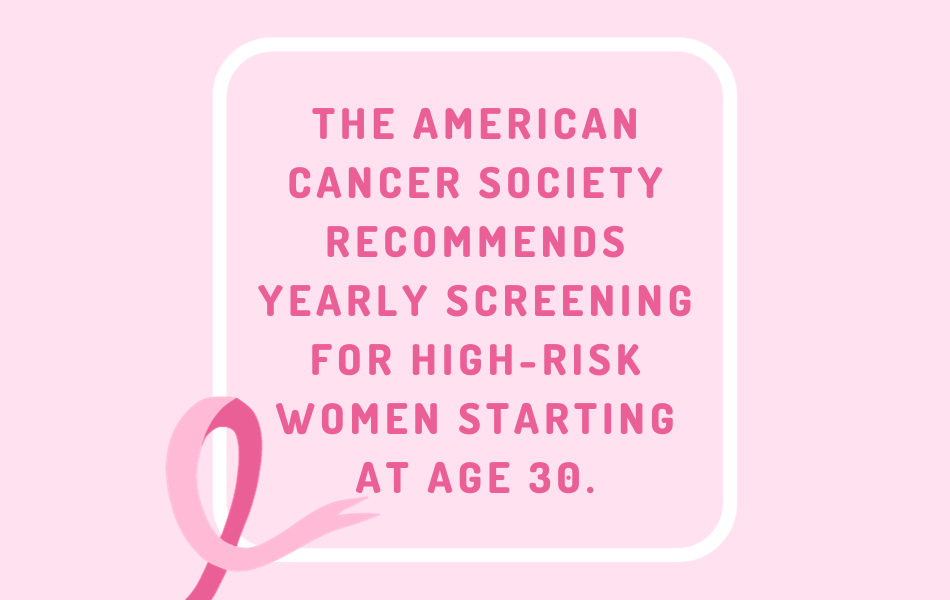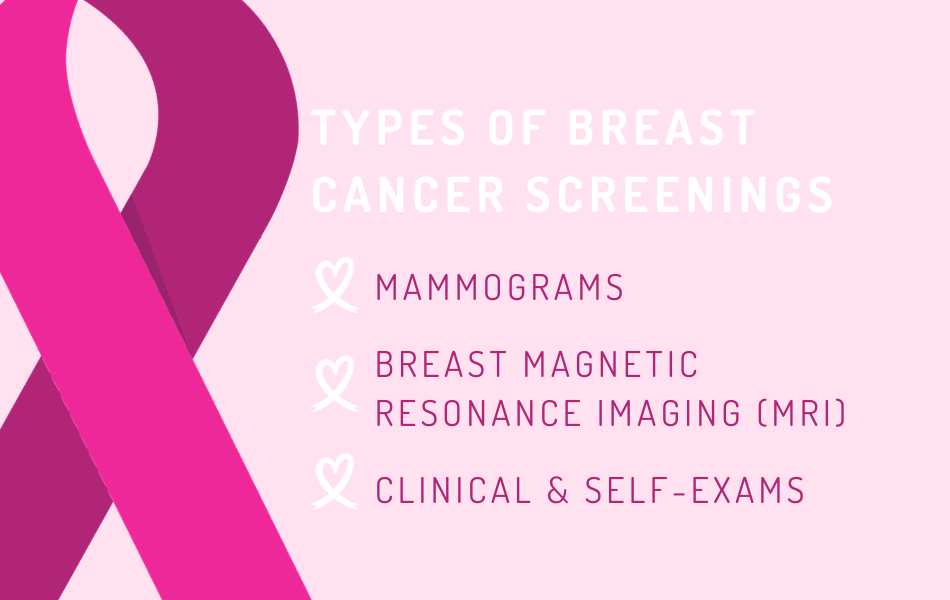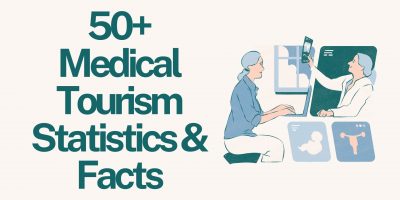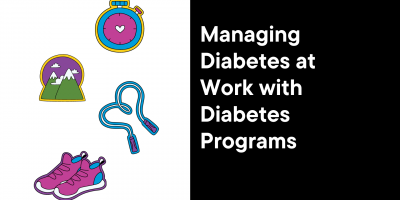Financial Toxicity & Breast Cancer
To what extent do breast cancer patients struggle with financial toxicity while battling this illness? What factors contribute to this financial toxicity?

This October marks the 38th anniversary of Breast Cancer Awareness Month (BCAM), when we bring attention to the most common type of cancer affecting millions of women globally.
While advocacy is imperative to the cause, addressing the seriousness of this disease requires long-term proactive measures from health organizations, governments, community leaders, and employers that go beyond BCAM.
In this Shortlister article, we’ll explore the role of employers in raising awareness and how they can contribute to early detection through breast cancer screening recommendations as a preventative measure.
Initiated in 1985 by the American Cancer Society and Imperial Chemical Industries (now AstraZeneca), the BCAM campaign aimed to encourage women to do regular breast cancer screening.
Since then, it has expanded into a movement about educating the public on breast cancer symptoms, prevention, and treatment. This includes awareness of the signs, the importance of early detection, breast cancer screening recommendations, and more.
Another critical aspect of Breast Cancer Awareness Month is to help organizations raise funds for research and cure.
Over the years, many foundations, non-profits, breast cancer associations, and companies have joined the cause. Under the universal symbol of a pink ribbon, these campaigns aim to show solidarity and support for cancer survivors.
BCAM is an opportunity for employers to bring awareness to the disease in the workplace and show their commitment to employees’ well-being by encouraging breast cancer screenings.

Breast cancer screening is a medical process of checking for cancer in asymptomatic patients or before any signs or symptoms of the disease show. There are multiple types of screening, but their goal is the same – early detection to improve survival rates.
This alone is reason enough for employers to support BCAM and align it with their commitment to employee health.
Unlike an early diagnosis, which focuses on detecting cancer in symptomatic patients, screening is a more complex health strategy. According to the World Health Organization, it includes anything from inviting the target population to better access to treatment after a diagnosis.
In the workplace, this entails breast cancer screening recommendations as a preventative health strategy, easy access to such services, and providing additional support and resources before and after a diagnosis.
While every effort to raise awareness matters, Breast Cancer Awareness Month should represent more than giving out pink ribbons or a pink dress code at work.
Instead, employers can use this occasion to advocate for regular health screenings actively, provide access to healthcare services, including breast cancer screening, and engage their employees in awareness campaigns.
These activites should be part of any comprehensive wellness initiative in the workplace.
Beyond the benefit of reduced healthcare costs that reach billions of dollars and a healthier work environment, it’s a moral obligation that can significantly change the outcome of the illness and save lives.
There are different ways in which employers can provide access to breast cancer screening services. Usually, it’s through health insurance plans or part of comprehensive wellness programs.
Moreover, under the Affordable Care Act (ACA), coverage of breast cancer screening and prevention services is usually free with private group and individual insurance, Medicaid, and Medicare. Recommended by the United States Preventive Services Task Force (USPSTF) and the Health Resources and Services Administration (HRSA), the guidelines include:
Some U.S. states have additional laws on this matter. Thus, employers need to check their local regulations and consult with their benefits providers on compliance with health laws.
Breast cancer is a complex and life-altering disease.
As such, it requires utmost attention before and after a diagnosis. So, in addition to giving breast cancer screening recommendations and easy access to services, employers should further support their employees.
For example, considering the emotional toll of a cancer diagnosis and the aftermath of getting one, adding mental health support to the list of resources is paramount. This includes confidential counseling services, Employee Assistance Programs (EAPs), educational resources, and more.
Moreover, employers can consider providing information on local support groups, organizations, financial wellness programs, and reasonable accommodation in the workplace.
Ultimately, the more companies do for their workforce, the easier their journey toward recovery will be.
According to the USPSTF, women over 40 at average risk of this disease should consult their doctor or healthcare provider on when to start breast cancer screening and how often to do it. This decision should be an individual one.
For women between ages 50 and 74, the recommendation is to perform a mammogram every two years.
The American Cancer Society, on the other hand, recommends the following:
It’s important to note that these breast cancer screening recommendations are for asymptomatic patients, meaning they are a preventative measure for those who are or appear healthy. In this case, a person who is at an average risk is one who:
The American Cancer Society recommends yearly screening for high-risk women starting at age 30.

The two main types of breast cancer screenings are a mammogram and a Breast Magnetic Resonance Imaging (MRI).
A mammogram detects changes in the breast tissues using low-dose X-rays, often long before any symptoms show. This makes it the best choice for early detection of breast cancer.
Moreover, technological improvements in recent years introduced a more advanced type of 3D mammogram or digital breast tomosynthesis. Although still not as widespread as 2D mammograms, it shows promising results, including detecting abnormalities in women with denser breast tissue.
However, it’s more expensive and may not be entirely covered by insurance.
Breast MRIs are used for high-risk patients along with yearly mammograms. They use magnets and radio waves to take images of the breast tissue to detect some cancers that a mammogram screening would miss.
However, they can also give false positive test results, leading to unnecessary biopsies, which is why they are not recommended for women at an average risk of breast cancer.
Despite being the most sensitive screening procedure, with sensitivity ranging between 77% and 96%, an MRI can also give false negative test results, emphasizing the need for a combined approach in high-risk patients.
Other methods include self-examination, or searching for abnormalities and lumps in the breast, and regular clinical exams. However, while these are encouraged by medical professionals, the American Cancer Society reports little evidence that they contribute to early detection if the patients have regular mammograms.
Regardless, women should know how to recognize any changes to their bodies to recognize the symptoms of breast cancer and immediately report them to a health professional.

Accounting for 12.5% of all new cases globally, breast cancer is the most common type after prostate, lung, colorectal cancers, and melanoma.
According to the Centers for Disease Control and Prevention (CDC), it’s also a costly disease, reaching $29.8 billion in total annual medical costs in 2020. Moreover, breast cancer has the highest treatment expenses of any cancer.
Other facts and statistics further showcase the seriousness of this matter:
Regarding race and ethnicity, findings show that white women are more likely to develop this condition than other races and ethnicities. However, breast cancer mortality rates are higher among black women by 40%, and so is a more aggressive and advanced stage of breast cancer at a younger age.
On a more positive note, in the past few decades, we’ve significantly improved the detection and treatment of this condition. This led to a 43% decrease in mortality rates between 1989 and 2020. The CDC also reports that following breast cancer screening recommendations can:
Seeing how severe and costly this disease is, we must address the disparities that persist, recognizing that there are many barriers to breast cancer screening that we have yet to tackle.
A study on “Barriers to Breast Cancer – Screening Adherence in Vulnerable Populations” reveals that despite mammograms being an effective way to decrease mortality, not everyone gets screened regularly. Using data from publications from 2016 to 2021, the report identifies the following barriers:
Another research shows that these barriers worsened for racial and ethnic minorities and low-income women after the COVID-19 pandemic struck.
Both studies acknowledge the importance of raising awareness, bettering education, providing better access to healthcare, and making it more inclusive of different cultures and backgrounds to improve screening rates.
Beyond this, there are other non-economic structural barriers to breast cancer screening, such as administrative procedures, transportation, inconvenient clinic hours, etc.
Employers can remove some obstacles by offering flexible work, paid time off, and good health insurance. More importantly, they can significantly contribute to cultural sensitivity by creating an inclusive company culture and ensuring their health initiatives consider diverse employee backgrounds.
Reducing structural barriers increases breast cancer screening by 18%. Consequently, this leads to higher chances of early detection when cancer is most treatable.
Early detection often means a less aggressive treatment, lower healthcare costs, and, most importantly, a better prognosis.
Thus, in anticipation of Breast Cancer Awareness Month, employers should turn to solutions that promote awareness and inspire action.
Breast cancer screening recommendations should be one aspect of a comprehensive health strategy that contributes to early detection, better outcomes, and improved quality of life for employees facing breast cancer.
Content Writer at Shortlister
Browse our curated list of vendors to find the best solution for your needs.
Subscribe to our newsletter for the latest trends, expert tips, and workplace insights!
To what extent do breast cancer patients struggle with financial toxicity while battling this illness? What factors contribute to this financial toxicity?

Discover the global landscape of medical tourism, explore insights by country, cost savings, and future projections in healthcare travel.

Uncover the latest insights into child care in the US with our 40+ essential statistics, providing a detailed look at the state of child care services, accessibility, and family dynamics.

Projections suggest that diabetes could affect one out of every three Americans by 2050. Can diabetes programs help?
Shortlister Connect is a tool specifically designed to be utilized by the HR and Procurement/Sourcing teams within mid-size, large and jumbo employers. Shortlister Connect allows these teams to efficiently research & identify their optimal vendor partners, track existing vendor relationships & performance and “connect” with other employers to share successes and vendor experiences.
If you are not on the HR or Procurement/Sourcing team within an employer with over 200 employees, you will not be granted access to Connect. Examples of individuals that would not be granted access include, but are not limited to: vendors, students, practitioners, researchers, other non-employers or anyone that is unwilling to identify themselves will not pass our vetting criteria. If you are a consultant, Shortlister offers a specialized product for consultants, called Shortlister Select. You can email Tom Ciccotti at tciccotti@myshortlister.com to learn more about Shortlister Select.
***Shortlister retains the exclusive right to grant or deny access to any party to ensure the privacy of the vendors in our system.
Please login with your LinkedIn Credentials
Used by most of the top employee benefits consultants in the US, Shortlister is where you can find, research and select HR and benefits vendors for your clients.
Shortlister helps you reach your ideal prospects. Claim your free account to control your message and receive employer, consultant and health plan leads.